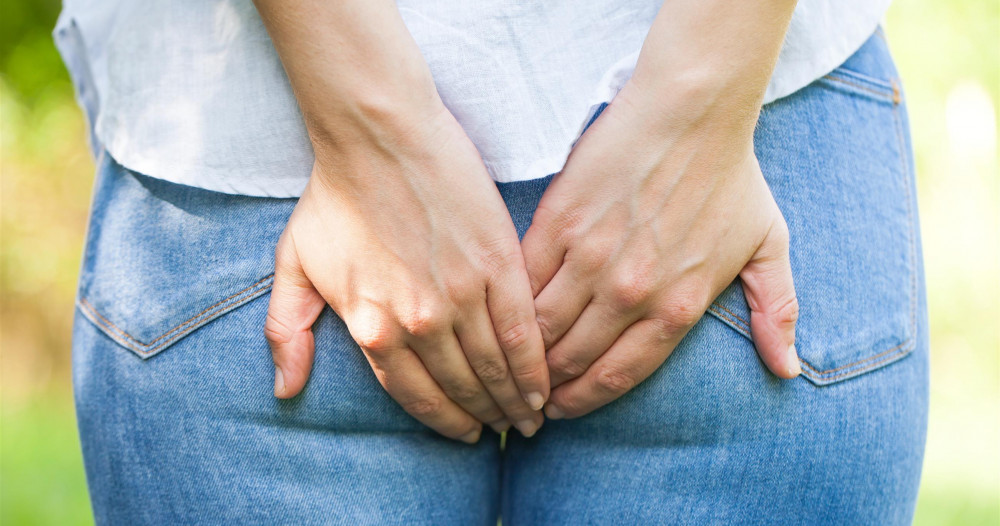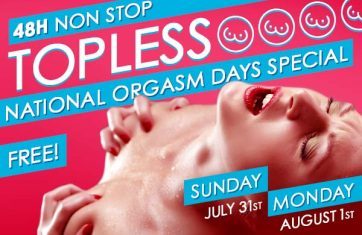
Although embarrassing (and sometimes taboo!), anal itching is generally benign. Here’s a look at the possible causes of anal itching!

Itching of the anus is not uncommon: according to the Société Nationale Française de Coloproctologie (SNFCP), 15% of the French population is affected! Prurit anal” – the medical term for anal itching – is a scratching sensation in the anus. The causes can be multiple. It’s important to identify them!
Definition and possible causes of anal pruritus
Anal itching is itching around the anus. Examples of possible causes of anal itching include hemorrhoids , anal fissures, pinworms(Enterobius vermicularis), spicy foods and medications.
Additional symptoms associated with anal itching include burning and pain if the anal skin is traumatized by scratching.
Diagnosing the cause of anal pruritus requires examination of the anus for common anal problems such as hemorrhoids or fissures, skin conditions such as psoriasis or cancer, infectious diseases such as pinworms or yeast, and leaky stools.
Treatment of an itchy anus depends on the cause.
What is anal itching?
Anal itching is an itchy irritation of the skin around the opening of the anal canal through which stool leaves the body. The skin surrounding the opening is known as the anus. Itching is accompanied by a desire to scratch.
Although itching may be a reaction to chemicals in the stool, it often involves inflammation of the anal region. The intensity of anal itching and the amount of inflammation increase with the direct trauma of scratching and the presence of moisture. At its most intense, anal itching causes intolerable discomfort, often described as burning and pain.
What are the most common causes?
- Itchy buttocks can be caused by irritating chemicals in the foods we eat, such as those found in spices, hot sauces and peppers.
- Anal itching can also be caused by irritation from continuous moisture in the anus due to frequent liquid stools, diarrhea or leakage of small amounts of stool (incontinence or fecal soiling). Moisture increases the likelihood of anus infections, particularly yeast infections, especially in patients with diabetes or HIV.
- Treatment with antibiotics can lead to yeast infection and irritation of the anus.
- Psoriasis can irritate the anus.
- Abnormal passages (fistulas) from the small intestine or colon to the skin surrounding the anus can form as a result of medical conditions (such as Crohn’s disease), and these fistulas bring irritating fluids into the anal region.
- Rarely, tumors of the anus (anal cancer) can cause itching.
Other problems that can cause anal itching include:
- Pinworms,
- Hemorrhoids,
- Anal skin tears (fissures) and
- Acrochordons (abnormal local growth of anal skin).
What additional symptoms are associated with an itchy anus?
The intensity of anal itching and the amount of inflammation increase due to the direct trauma of scratching and the presence of moisture. At its most intense, anal itching causes intolerable discomfort that is often described as burning and pain, particularly during and after bowel movements. There may also be small amounts of bleeding.
What kind of doctor treats anal pruritus?
Although anal itching can be assessed by a family doctor or internal medicine physician, it is most often evaluated by a colorectal surgeon (proctologist) and sometimes by a gastroenterologist.
How do medical professionals diagnose the cause of anal itching?
Anal itching is first assessed by careful examination of the anus for abnormalities such as hemorrhoids, anal fissures, acrochordons, moisture and excoriations (skin breaks caused by scratching).
A rectal examination with a finger inserted into the anal canal can identify rectal tumours. To examine the anal canal more closely, a proctoscope can be used. A proctoscope is a short tube that is inserted into the anus and rectum so that the anal canal can be examined visually. If pinworms are suspected, this can be identified using the pinworm test, in which worms and eggs are retrieved from the anus using transparent tape.
What are the treatment options and home remedies?
Personal first aid for simple itching aims to relieve symptoms, such as burning and pain. It’s important to clean and dry the anus thoroughly and avoid leaving soap in the anal area.
- Cleansing efforts should include a gentle shower without direct rubbing or irritation of the skin with the washcloth or towel.
- After bowel movements, moist towels (such as baby wipes, disposable wet wipes and disposable anal cleansing wipes) should be used to clean the anus instead of toilet paper.
- In cases of constant moisture in the anus or fecal incontinence, it may be necessary to clean the anus with wet wipes between stools.
Many over-the-counter (OTC) products are sold for the treatment of itchy anus, and are available in the form of ointments, creams, gels, suppositories, foams and tampons. These products often contain the same medications used to treat hemorrhoids.
- When used around the anus, ointments, creams and gels should be applied in a thin layer.
- When applied to the anal canal, these products should be inserted with a finger using fingertips (latex covers for the fingertips) or a “pile pipe”. Pile pipes are most effective when they have holes on the sides as well as at the end. Pile pipes should be lubricated with ointment before insertion.
- Suppositories or foams have no advantage over ointments, creams and gels.
Most products contain more than one type of active ingredient. Almost all contain a protectant in addition to another ingredient. Only examples of brand-name products containing an ingredient in addition to the protectant are discussed in this article.
Local anesthetics
Local anesthetics temporarily relieve pain, burning and itching by numbing nerve endings. Their use should be limited to the perianal area and the lower anal canal. Local anesthetics can provoke allergic reactions with burning and itching. Therefore, the application of anesthetics should be discontinued if burning and itching increase.
Here are some examples of local anesthetics:
- benzocaine 5% to 20% (hemorrhoidal, Lanacane Maximum Strength, Medicone)
- benzyl alcohol (Itch-X) 5%-20
- dibucaine 0.25% to 1.0% (Nupercainal)
- dyclonine 0.5% to 1.0% (Nupercainal)
- lidocaine (Xylocaine) 2% to 5
- pramoxine 1.0% (fleet pain relief, non-steroidal Procto foam, tronothane hydrochloride)
- tetracaine 0.5% to 5.0
Vasoconstrictors
Vasoconstrictors are chemicals such as epinephrine, a naturally occurring chemical. When applied to the anus, vasoconstrictors make blood vessels smaller, which can reduce swelling. They may also reduce symptoms due to their mild anesthetic effect.
Vasoconstrictors applied to the perianal area – unlike vasoconstrictors administered by injection – have a low probability of causing serious side effects, such as high blood pressure, nervousness, tremors, insomnia and aggravation of diabetes or hyperthyroidism.
Examples of vasoconstrictors include:
- ephedrine sulfate 0.1% to 1.25
- epinephrine 0.005% to 0.01
- phenylephrine 0.25% (Medicone Suppository, Preparation H, Rectocaine)
Protectors
Protectors prevent irritation of the perianal area by forming a physical barrier on the skin that prevents contact of irritated skin with aggravating fluid or stool from the rectum. This barrier reduces irritation, itching, pain and burning. There are many products that are themselves protectors or that contain a protector in addition to other medications.
Here are some examples of protectors:
- aluminum hydroxide gel
- cocoa butter
- glycerine
- kaolin
- lanolin
- mineral oil (Balnéol)
- white petroleum jelly
- starch
- zinc oxide (Desitin) or calamine (which contains zinc oxide) in concentrations of up to 25%.
- cod-liver oil or shark-liver oil if vitamin A intake is 10,000 USP units/day.
Astringents
Astringents cause the coagulation (clumping) of proteins in the cells of the perianal skin or the mucous membrane of the anal canal. This action promotes skin dryness, which in turn helps relieve burning, itching and pain.
Here are some examples of astringents:
- calamine 5% to 25%
- zinc oxide 5% to 25% (Calmol 4, Nupercainal, Tronolane)
- witch hazel 10% to 50% (Fleet Medicated, Tucks, Witch Hazel Hemorrhoidal Pads)
Antiseptics
Antiseptics inhibit the growth of bacteria and other organisms. However, it’s not clear whether antiseptics are more effective than soap and water.
Here are some examples of antiseptics:
- boric acid
- phenol
- benzalkonium chloride
- cetylpyridinium chloride
- resorcinol
- benzethonium chloride
Keratolytics
Keratolytics are chemicals that cause disintegration of the outer layers of skin or other tissues. The rationale for their use is that disintegration allows drugs that are applied to the anus and perianal area to penetrate deeper tissues.
The two approved keratolytics used are :
- aluminum chlorhydroxy allantoinate (alcloxa) 0.2% to 2.0
- resorcinol 1% to 3%
Analgesics
Analgesics, like anesthetics, relieve pain, itching and burning by depressing painful nerve receptors.
Here are some examples of analgesics:
- menthol 0.1% to 1.0% (more than 1.0% is not recommended) (Calmoseptine)
- camphor 0.1% to 3% (more than 3% is not recommended)
- juniper tar 1% to 5% (not recommended)
Corticosteroids
Corticosteroids reduce inflammation and can relieve itching, but chronic use can cause permanent skin damage. They should not be used for more than short periods of a few days to two weeks. Only products with a weak corticosteroid effect are available over the counter. Stronger prescription corticosteroids should not be used to treat anal itching.
What if anal itching persists?
For persistent anal itching, efforts are directed towards identifying an underlying cause. An examination by a physician can quickly identify most causes of anal itching. Adjustments to diet, treatment of infections or surgical intervention to correct the underlying cause may be necessary.







